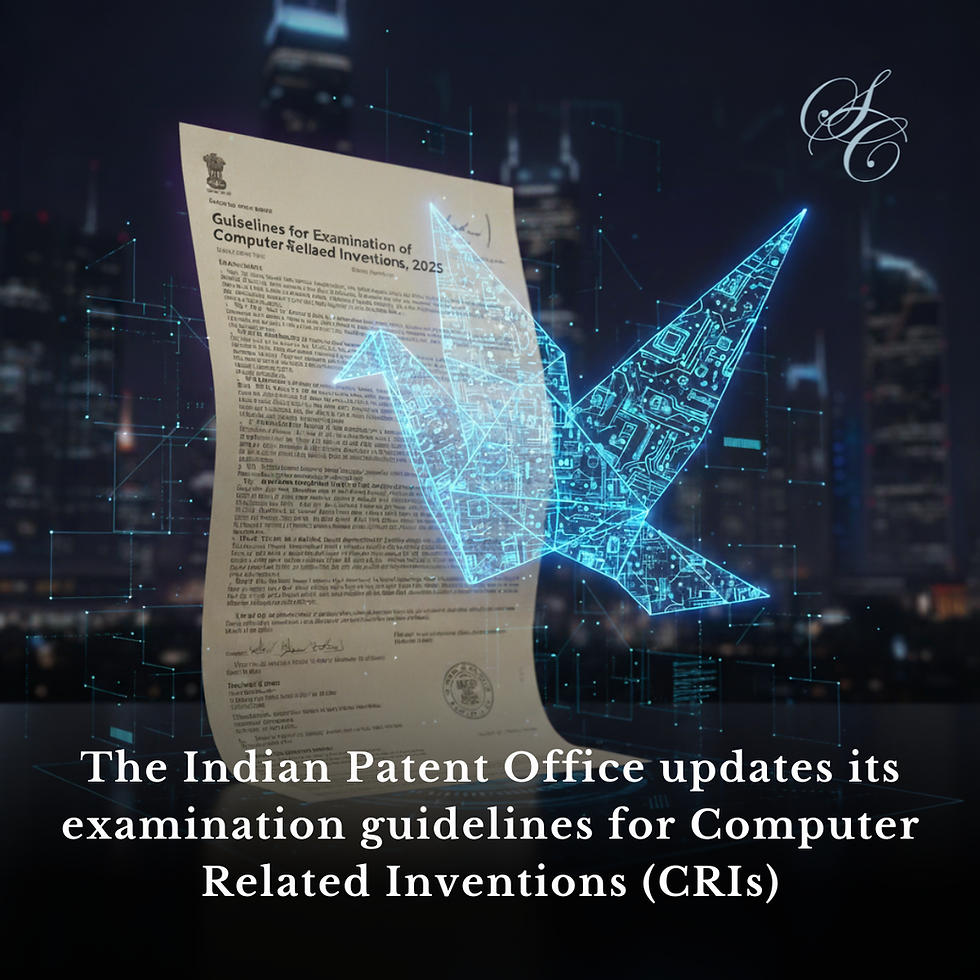Use Information in a Trade Mark Application
- Sarwajeet Singh
- Apr 10, 2016
- 3 min read
The law on trade marks requires all trade mark applicants to state whether their applications are based on proposed use or use. If an applicant bases an application on use, the law on trade marks requires the application to state a first use date in dd/mm/yyyy form. However, there is nothing in the law that requires an applicant to prove use prior to obtaining a registration. Rather, the Registrar of Trade Marks may, at his discretion, require an applicant to file affidavit of use – which will become a public document once uploaded on the Registry’s web site.
Why is it Important for an Application to Contain the Correct Earliest Use Date?
Use information in an application is often not a big focus of trade mark applicants filing in India. However, it is imperative that applicants pay attention to first use dates for the purpose of Indian applications. If an applicant overstates the earliest use date in India, then, this overstatement may, by itself, become a ground for cancellation of a registration if the use date cannot be supported by evidence. Although the law on trade marks does not require an applicant’s use of a mark prior to registration, in practice, a registration can be cancelled on the ground that a registrant obtained a registration by claiming a false use date. Such a consequence can be avoided if an applicant investigates his use of a mark in India prior to filing. Obviously, such investigation should be followed by steps to preserve relevant evidence.
What is Construed as the “Use” of Mark?
The law on trade marks defines use very broadly to include both use on a good and in relation to goods (non-physical use). Furthermore, manufacture of goods in India for the sole purpose of export is considered as use if a mark is affixed to the goods in India. Even use of a mark prior to the act of affixation may constitute use of the mark. Thus, promotional activities around a mark could constitute use. For services, however, mere advertisement may be insufficient if the services are not being provided in India under the mark in question.
Generally applicants file for a slew of goods/services in a class. Whether use of a mark on or in relation to one good will constitute use on or in relation to another good in the same class has not been considered so far by courts. To err on the side of caution, one should choose specification terms flexible enough to cover a wide range of goods/services. For example, the display of the mark on an advertisement for soaps, is more likely to constitute use for both deodorants and soaps, if the specification included “toiletries.”
How is “Use” relevant in Practice?
As far as goods are concerned, in practice, tribunals and courts sometimes differ in their determination of the use status of a mark. The Intellectual Property Appellate Board (“IPAB”), a tribunal that adjudicates cancellation actions apart from the Trade Marks Registry, has, in some cases, chosen to not to construe “use” liberally. It has, instead, asked for evidence of affixation of marks to goods. Therefore, the only situation where it is 100% safe to file an application with a use date, is if you have already affixed your mark on the goods for which you have made the application. In such a situation, though you may claim the earliest affixation date as the use date in your application, you should also make sure to detail non-physical use of your mark (the other ways by which you have used your mark) before the affixation date in your affidavit of use. By doing so, you avoid acquiescing your rights to claim a first use date prior to the affixation date in a civil suit for passing off/trademark infringement – where courts are known to liberally acknowledge use even if the mark is not affixed on the goods.
As far as services are concerned, in practice, use is construed liberally, and the IPAB’s decision-making has so far been consistent with the statute. This could be possibly because it is impossible to insist upon the affixation of a mark upon a service.
“If you must hit the mark, you must aim a little above it,” proclaimed the American poet, Henry Wordsworth Longfellow. This holds true for the “use” of a trademark as well. If you must use the mark, you must aim a little above it – “It” being the minimal threshold for “use” as is followed in practice by the Trade Marks Registry and the IPAB, rather than the liberal definition of “use” given in the statute.




Comments